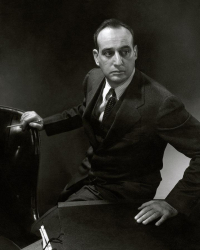
We didn’t go on vacation. We didn’t go out to restaurants. We’re not getting on planes, or trains. We’re not even using our automobiles much.
This service sector of the economy, where today’s unemployed were working before the pandemic, has been crushed. It remains crushed. It will remain crushed until the pandemic is over.
The only solution offered has been to subsidize spending. That subsidy ended in September. Trump’s people stole the money, and the Fed pumped trillions into Wall Street investors who didn’t need it. The result is the greatest transfer of wealth in history, from the poor and the middle class to the wealthy and, indeed, to the ultra-wealthy.

Real demand for real products.
Whenever this Trump nightmare ends, we’ll be left with an economy in near bankruptcy. The national debt is at an unsustainable level. We can meet its interest at current rates, but anything higher and we go broke fast.
A wealth tax would help. Taking back the 2017 tax cuts would help. Indeed, the stock market falling would help, because it would mean money going out of the fake economy into the real one.
The only secure way out is growth. Where will growth come from?

They weren’t all financed through direct government spending, as conservatives would have you believe. Many of these projects were created through specific use bonds. Robert Moses, now viewed as a villain for trying to suburbanize New York in the 1960s with freeways and public housing, became a hero in the 1930s through this financing method.
Here’s how it worked. You create an authority to do a thing, to build a bridge or a highway or whatever else you need. That authority then borrows the money. It’s repaid through user fees, specified in the bonding agreements, usually tolls.
This doesn’t add a penny to the debt. The bonds in this case are held by a local authority, and they have a specific plan for repayment. What drove everyone crazy later was that this worked too well. They generated so much positive cash flow, under so little public control, that Moses became a dictator.

We need a lot of infrastructure right now. This can pay for it. A government imprimatur, combined with private purchase agreements, can replace all our gas-fired power plants with solar and wind energy, in less than a decade. A version of that model has gotten the costs for solar and wind below the costs of building new gas or coal plants. Accelerate that, and you can drive costs below the cost of existing gas plants.
Another way to generate demand for things that matter is through user fees. Some states have tried this. They just couldn’t control the resulting market. States like Michigan and Maine put a price on glass bottles, which helped reduce their waste. We can do that with boxes and metal, too. We can create a market for such products from recyclers and put a floor under the price of their resulting output, so that we recycle more of our stuff. The technologies for doing this are here. The problem is it has been cheaper to just export our waste to China and have it processed there.
We don’t have to do that. By simply putting a price on our waste, and a value on recycled outputs, we create markets, we create jobs, and we fight the climate crisis. We also employ a lot of people who lack a college degree, people whose unemployment rates this year have skyrocketed.
The big economic mistake of the last 50 years was seeing the private and public economies as separate. They’re both parts of the whole. Every economy is a mixed economy. The only difference between America and Sweden is the degree to which the government creates and subsidizes demand. We’re both socialist. Neither one is socialist.

Personally, I think that a wealth tax and a guaranteed income would also benefit the economy. The stock market is too high. It’s unsustainable. Too much money is in the hands of too few people, and there are too many with nothing. We can balance this peacefully, as in the New Deal, or we can balance this violently, as during World War II.
The period from 1929-1954 is known as the “Great Leveling” among economists, as extremes between wealth and poverty were reduced. However we have to do it today, we have to do it, or social cohesion will be completely lost, and the resulting war will be a civil one, which no one will win.









